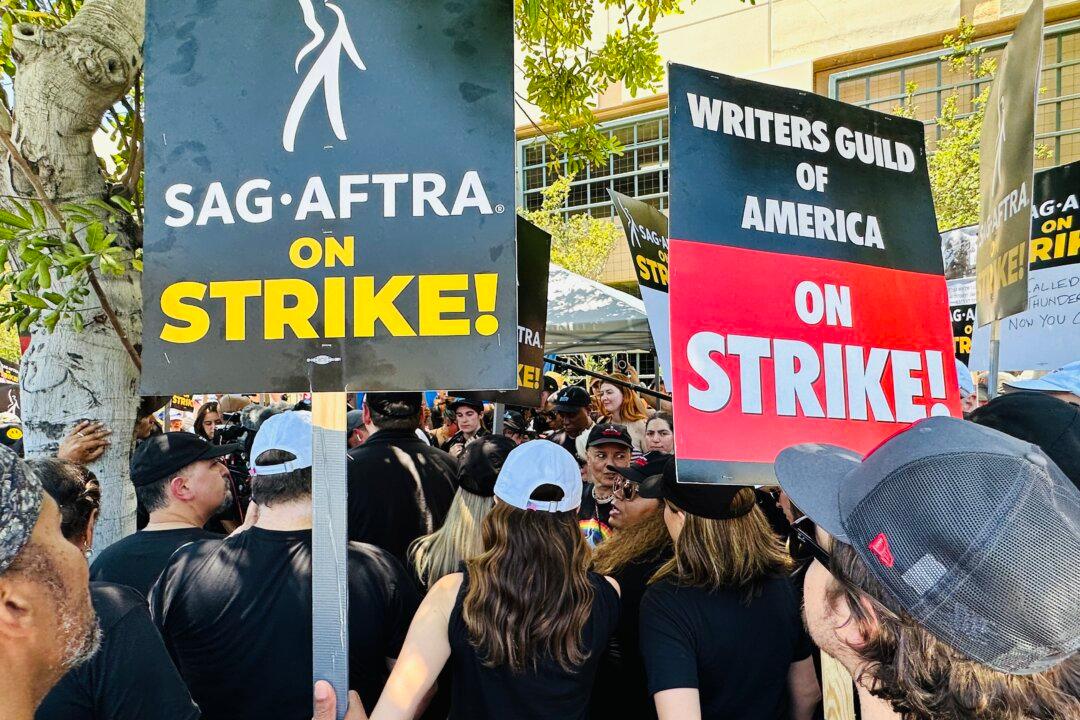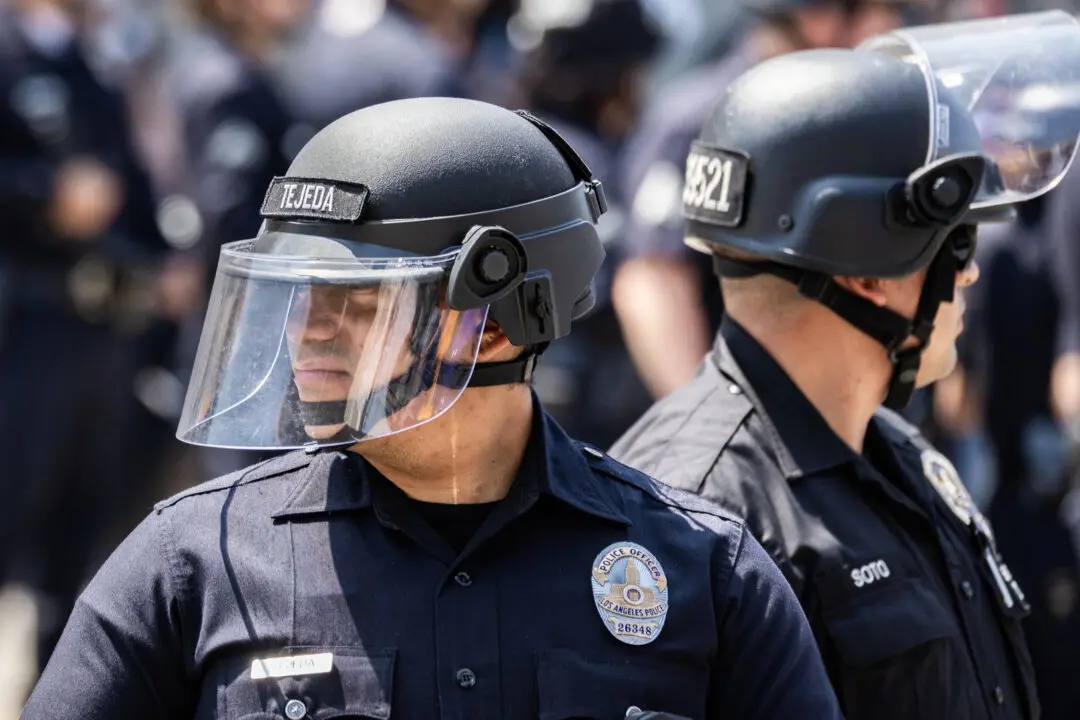LOS ANGELES—Thousands of striking writers and actors staged a solidarity march through Hollywood on Sept. 13, culminating in a boisterous rally outside Paramount studios as the dual labor stoppages continue to halt movie and TV production.
The Writers Guild of America (WGA) has been on strike since early May. The Screen Actors Guild and American Federation of Television and Radio Artists (SAG-AFTRA) actors’ union joined the writers on the picket lines in July. There have been some negotiations between the WGA and Hollywood studios in recent weeks, but still no indication a resolution is at hand. There has not been any word of talks between the studios and SAG-AFTRA.





